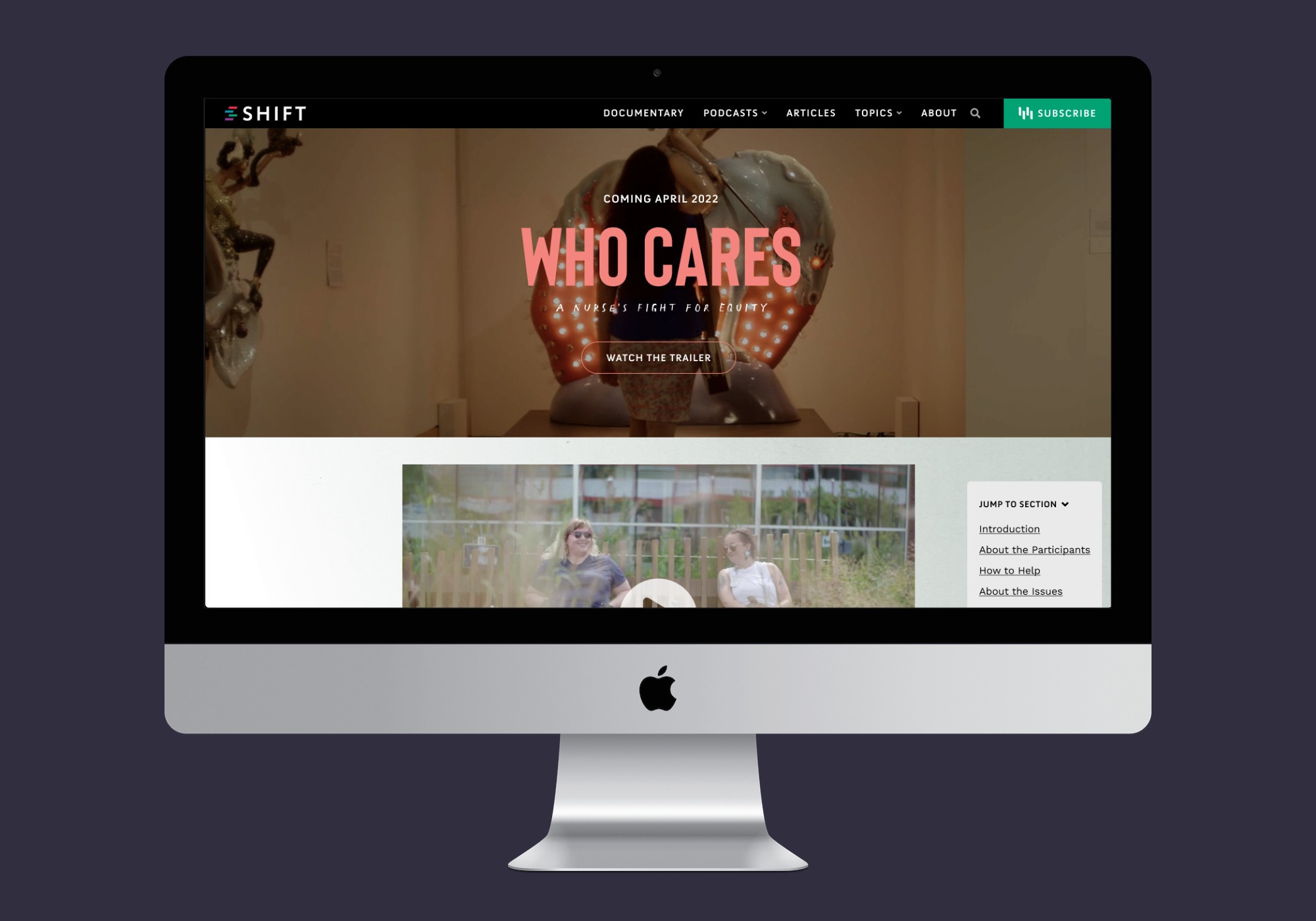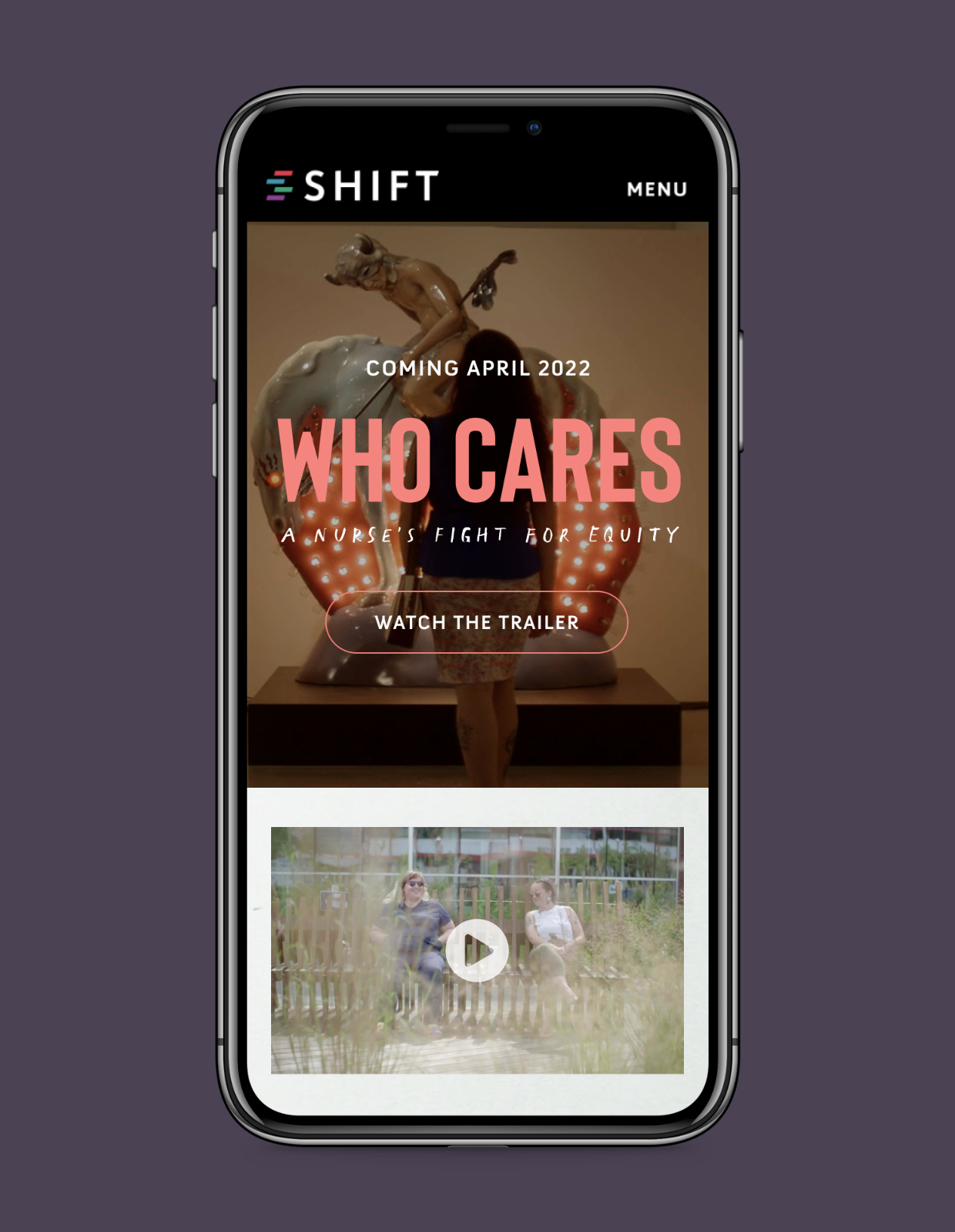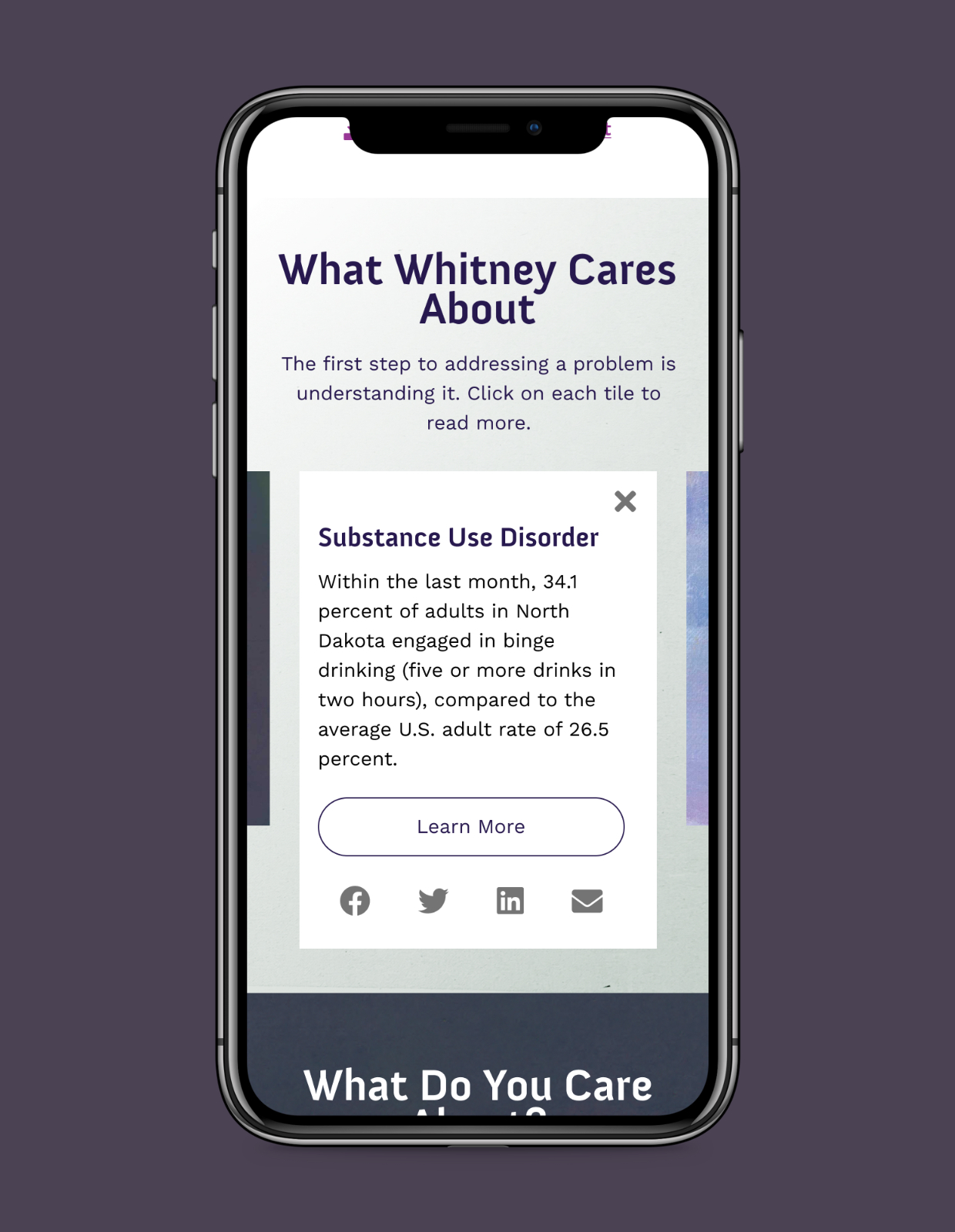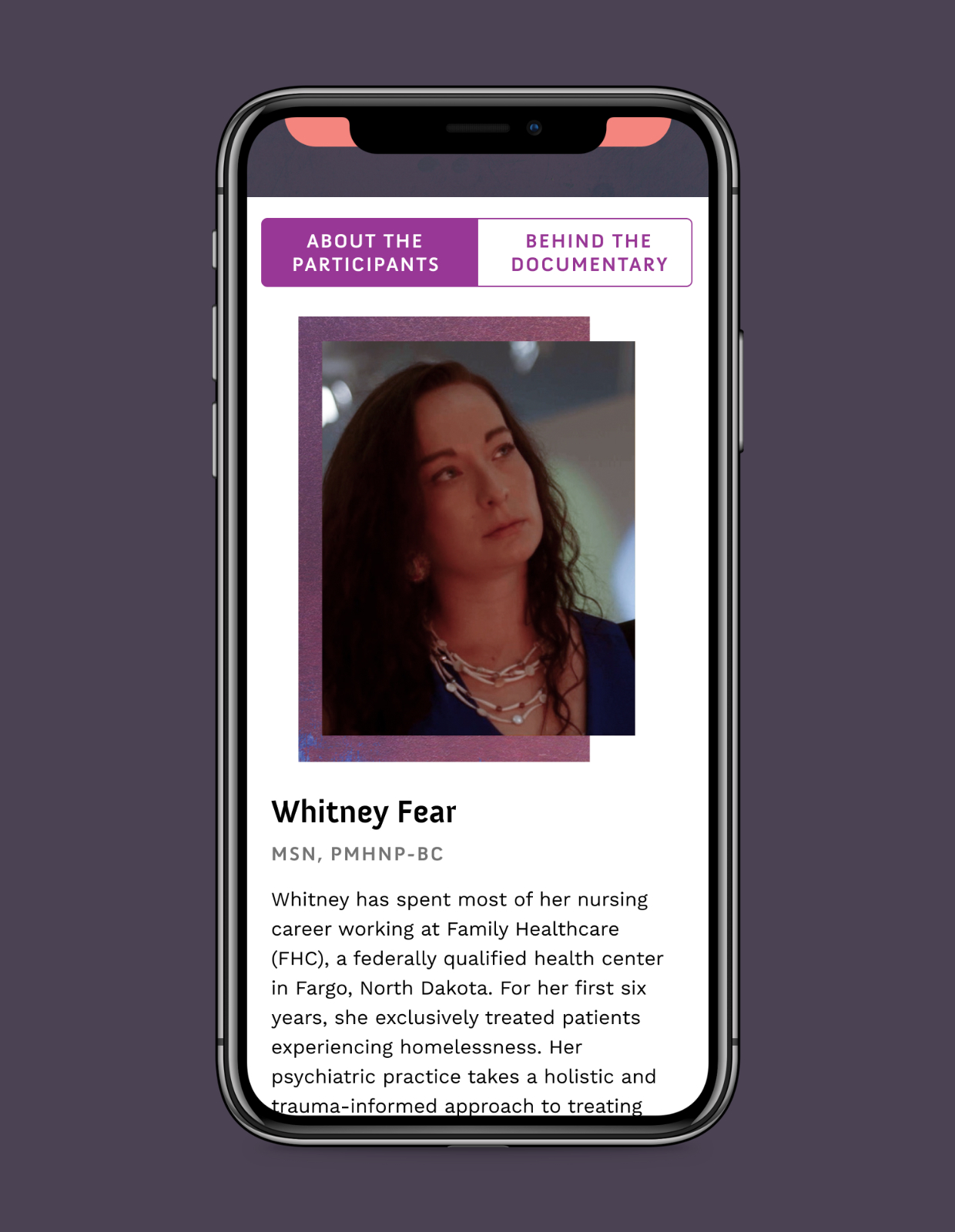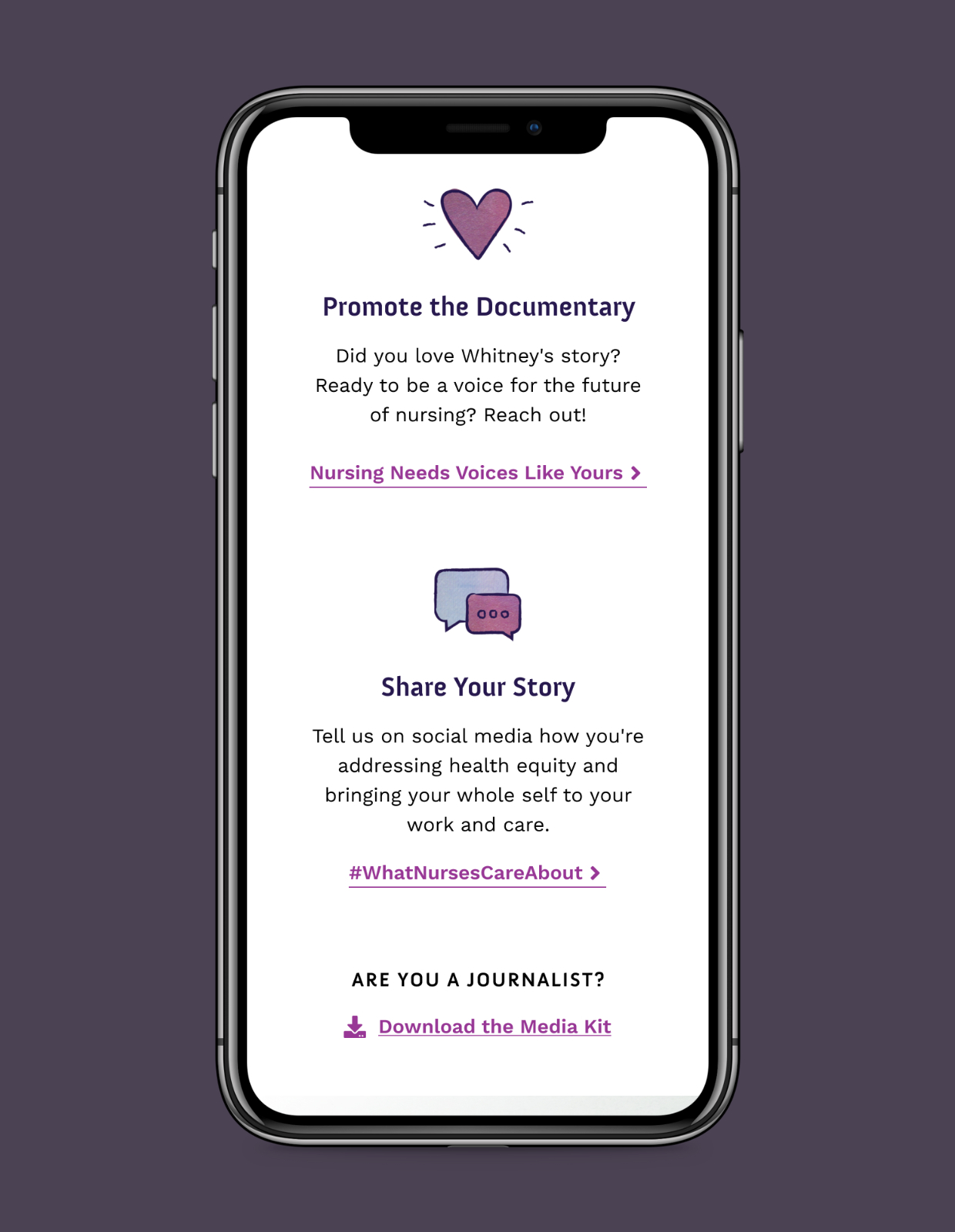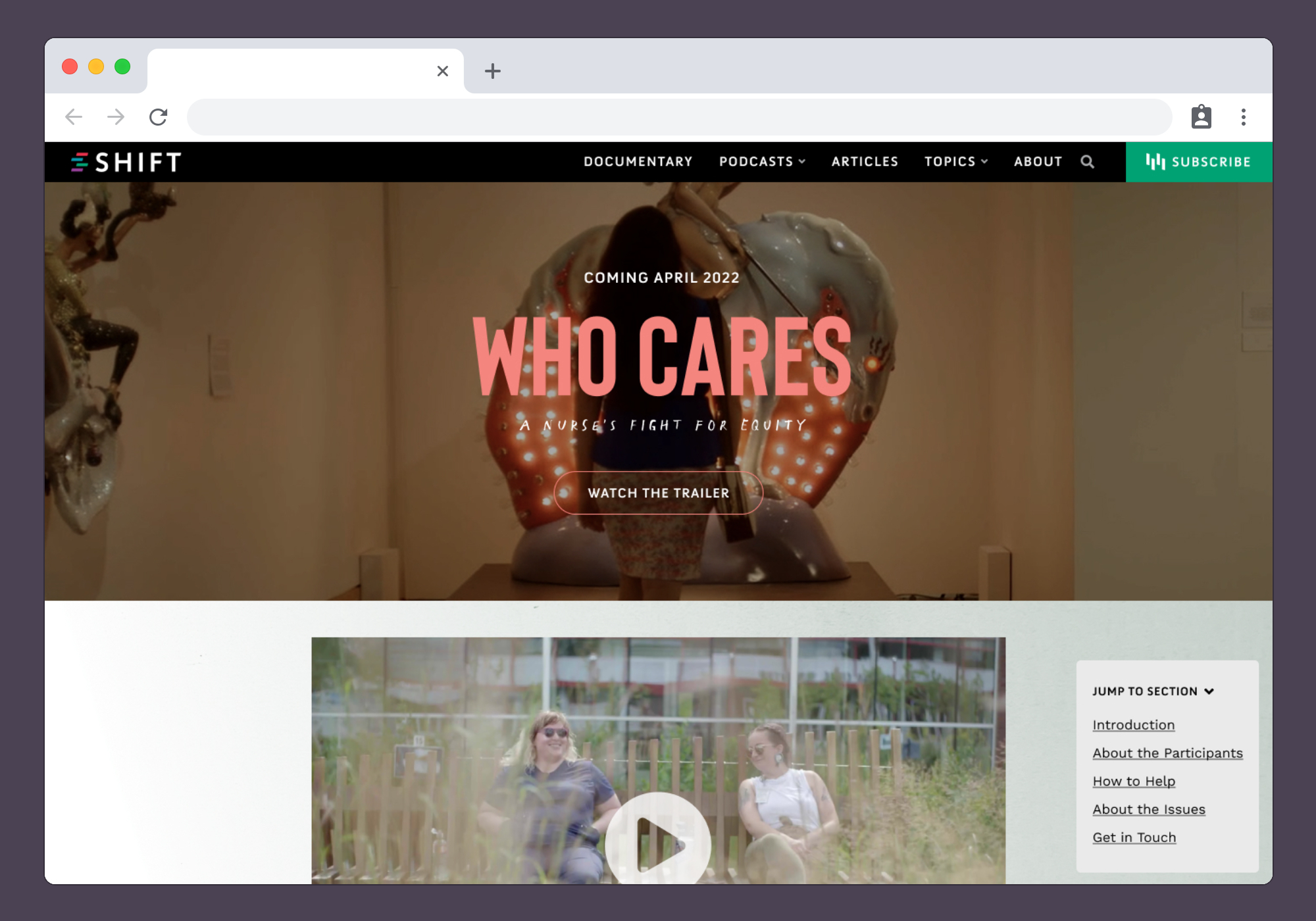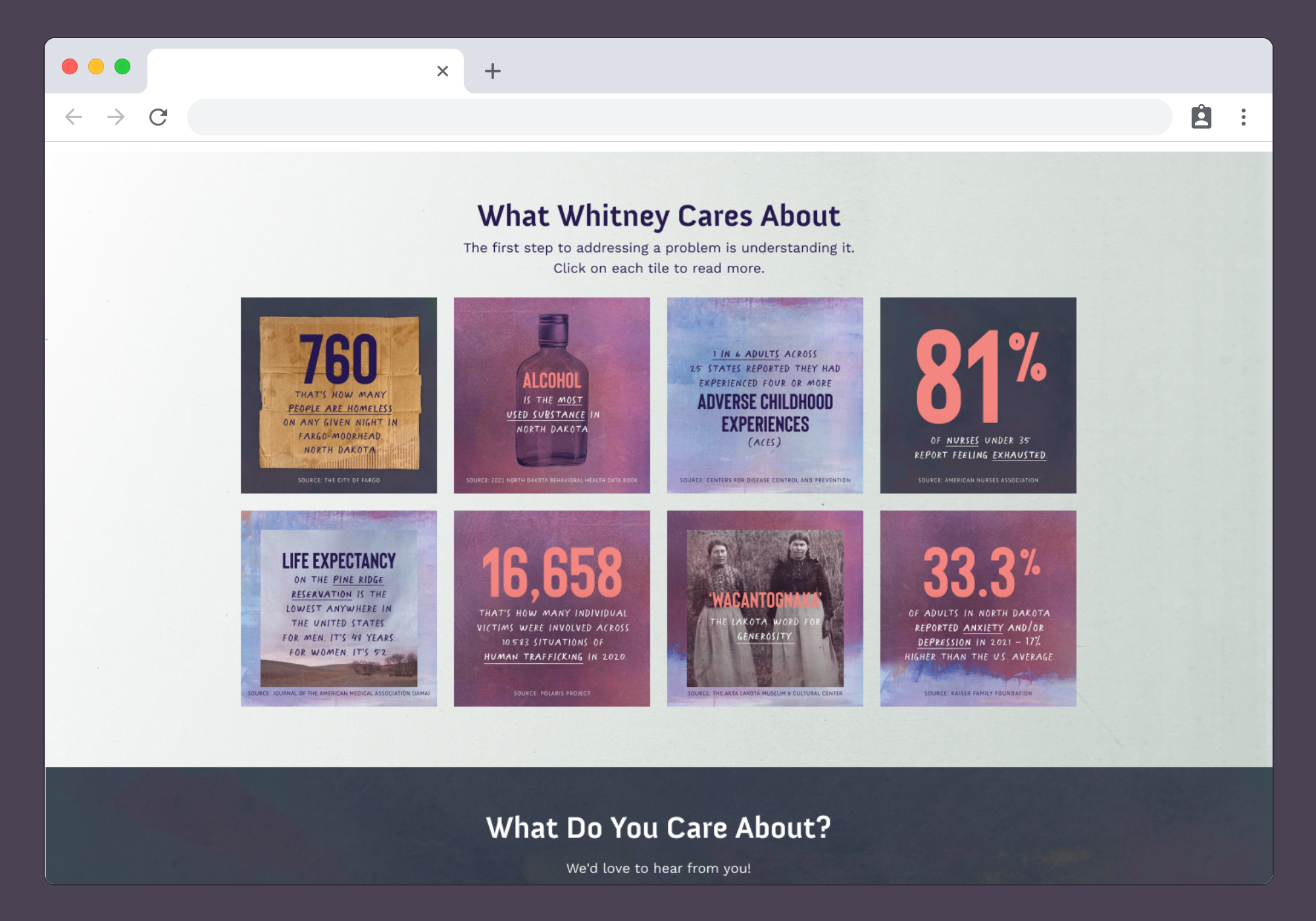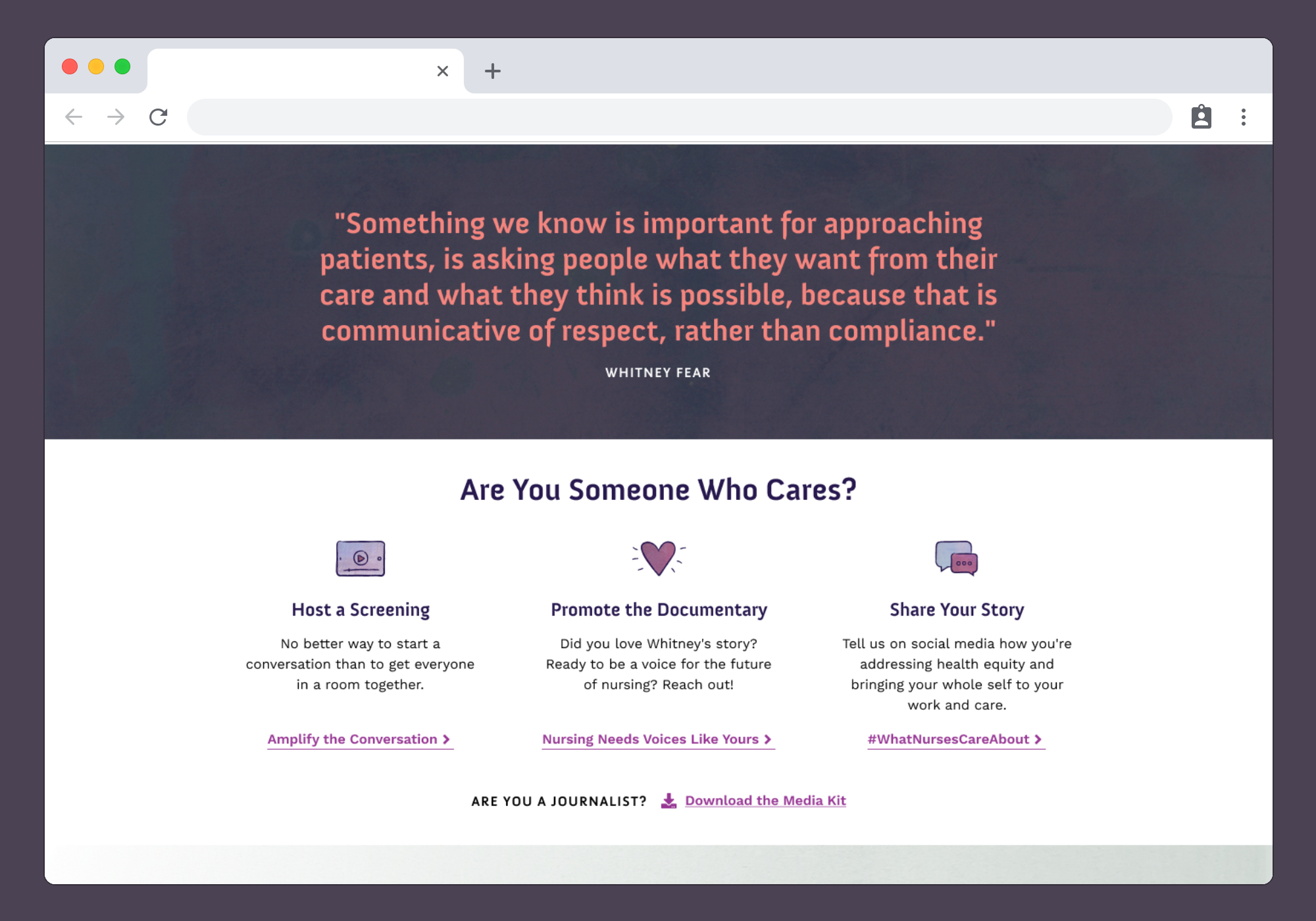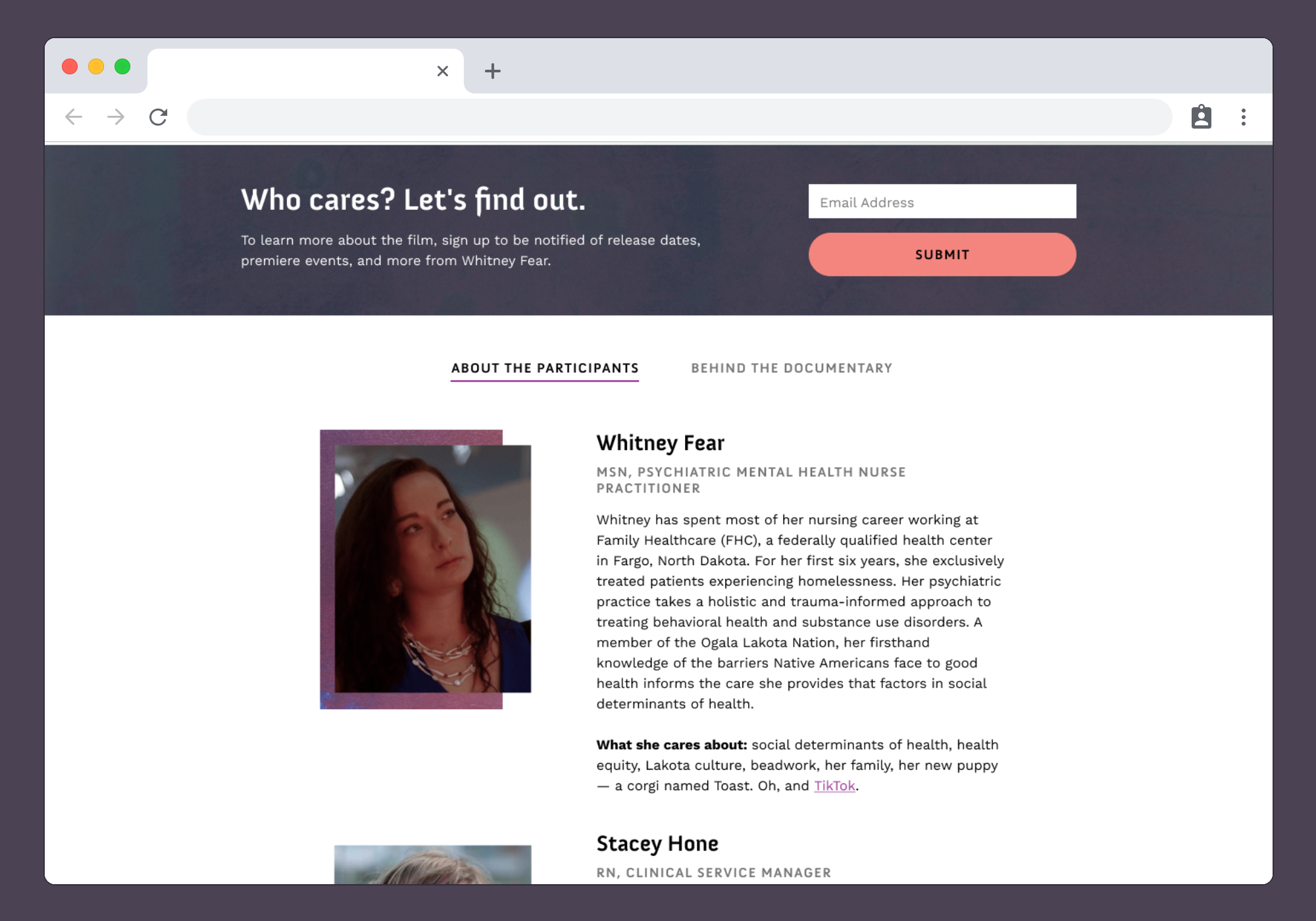Nurturing Health Equity Advocacy in the Nursing Community
SHIFT Nursing
Over the winter and spring of 2021-2022, I was tasked with designing a landing page that would promote the upcoming nursing documentary that was being produced for the SHIFT program.
Problem
The SHIFT platform was already very successful with 14k followers on Instagram and 2 seasons of the SHIFT Talk podcast, and the team wanted to use that platform to help educate the nursing community about how they could play an integral role in health equity.
Health equity, health disparities, and social determinants of health are popular buzzwords, but do nurses really know what they mean? The goal of the documentary was to make abstract concepts real and get nurses to imagine themselves contributing in their own way to better health equity.
The landing page objective was to promote the documentary and educate the nursing community about health equity issues and how they can become an agent of change.
Problem statement: How might we provide a resource for nurses to educate themselves and become health equity advocates in their own work?
Measuring success:
- Trailer/Documentary views
- Newsletter signups
- Contact for endorsement
Audience
The documentary would have 3 main audiences with the primary users being nurses who have an interest in health equity and inclusion, secondary being media, and tertiary being policymakers.
Solution
Assumptions
Since user research was unfortunately not in the scope of this project, I relied heavily on assumptions and the internal team to help me form a picture of our users.
I began by running a workshop to get the core team aligned on what they want each audience to know, feel and do from this documentary, and then worked backwards to come up with the users goals and flows.
Referencing the user flows, I collaborated with the Content Strategist to co-design a loose wireframe, and then began working through visual design with the Art Director while the Content Strategist fleshed out the content.
Wireframes
Since user research was unfortunately not in the scope of this project, I relied heavily on assumptions and the internal team to help me form a picture of our users.
I began by running a workshop to get the core team aligned on what they want each audience to know, feel and do from this documentary, and then worked backwards to come up with the users goals and flows.
Referencing the user flows, I collaborated with the Content Strategist to co-design a loose wireframe, and then began working through visual design with the Art Director while the Content Strategist fleshed out the content.
Final Designs
Learnings
This project was a good reminder that to do what’s best for our users, we have to talk to our users. In the end this landing page turned out well, but there’s no telling what all we could’ve learned from real UX research, and I hope that I’m able to incorporate it into more of my projects in the future.
